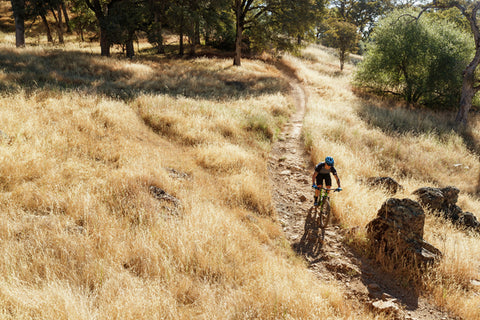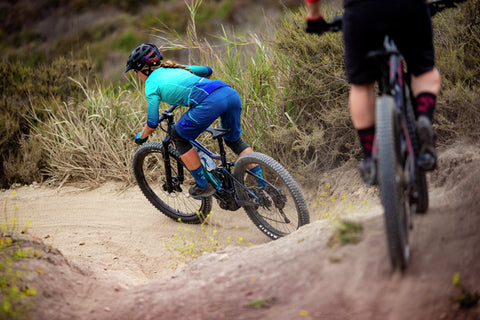Most mountain biking takes place on trails that are shared with hikers, equestrians, animals and other outdoor enthusiasts. Since 1988, the International Mountain Bicycling Association (IMBA) has offered the Rules of the Trail to promote responsible and courteous conduct on shared-use trails and to help everyone have enjoyable experiences.
Think of these mountain biking rules and trail etiquette tips as a mountain biker’s addendum to the Leave no Trace principles for all outdoor users. By embracing these simple guidelines you can be sure that you’re doing your part to respect both the natural world and your fellow trail users.
1. Ride On Open and Legal Trails Only

Respect trail and road closures — ask a land manager for clarification if you are uncertain about the status of a trail. Do not trespass on private land. Obtain permits or other authorization as may be required. Be aware that bicycles are not permitted in areas protected as state or federal Wilderness
2. Leave No Trace
Be sensitive to the dirt beneath you. Wet and muddy trails are more vulnerable to damage than dry ones. When the trail is soft, consider other riding options. This also means staying on existing mountain bike trails and not creating new ones. Don't cut switchbacks. Be sure to pack out at least as much as you pack in.
3. Control Your Bicycle
Inattention for even a moment could put yourself and others at risk. Obey all bicycle speed regulations and recommendations, and ride within your limits. Yield to others. Do your utmost to let your fellow trail users know you're coming -- a friendly greeting or bell ring are good methods.
Try to anticipate other trail users as you ride around corners. Bicyclists should yield to all other trail users, unless the trail is clearly signed for bike-only travel. Riders traveling downhill should yield to ones headed uphill, unless the trail is clearly signed for one-way or downhill-only traffic. Strive to make each pass a safe and courteous one.
Keep your head up and your adrenaline in check. When you see videos of riders seeming to defy the laws of physics, use them as inspiration to develop your skills while saving yourself expensive medical bills and pain.
- Obey all speed regulations and recommendations.
- Stay alert — inattention for even a moment can put yourself, others and animals at risk.
- Always ride within your limits.
4. Never Scare Animals
When it comes to wildlife Live and Let Live. Animals are easily startled by an unannounced approach, a sudden movement or a loud noise. Give animals enough room and time to adjust to you. When passing horses, use special care, speak soft and calmly and follow directions from the horseback riders (ask if uncertain). Running cattle and disturbing wildlife are also serious offenses in certain areas.
5. Yield Appropriately
Learn the rules below as well as the local rules, because conventions for yielding and passing may vary in different locations, or with traffic conditions. You want every encounter to be a happy one.
-
Always let other trail users know you're coming - if there are other riders behind you let them know — and give a friendly greeting.
-
Anticipate other trail users as you ride around corners.
-
Yield to non-bike trail users (gently enlighten them if the trail is clearly signed for bike-only travel).
-
Yield to riders headed uphill whenever you’re riding downhill (gently enlighten them if the trail is clearly signed for one-way or downhill-only traffic).
-
Make every pass a safe and courteous one.
6. Plan Ahead

Know your equipment, your ability and the area in which you are riding -- and prepare accordingly. Strive to be self-sufficient: keep your equipment in good repair and carry necessary supplies for changes in weather or other conditions. Always wear a helmet and appropriate safety/protective gear.
Check before you ride
San Diego and other local trails in your area are often busy places with multiple types of trail users. San Diego Mountain Bike Association or your local Mountain Bike Association will have information to assist with knowing the rules and regulations of your local trails.
Because trail conditions may change, it's a good idea to check the current status of a trail before you go. If you live in San Diego check the San Diego Mtn Bike Association website @ www.sdmba.com .
Your actions have critical impacts on the landscape, the trails, the animals and other trail users. Pledge to ride friendly; ride prepared; ride responsibly; ride lightly.
Have a great ride!







